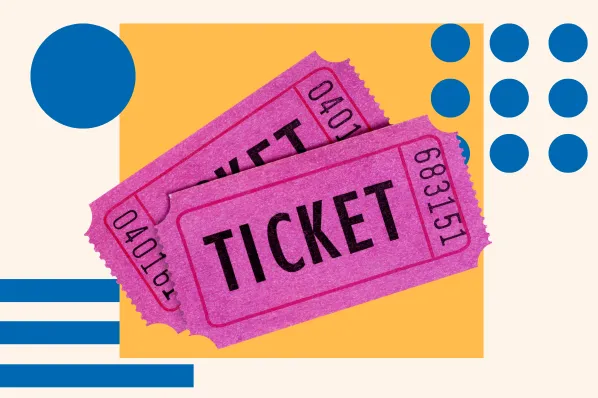Off the stage, I track metrics like ticket sales, merch revenue, social engagement, and monthly Spotify listeners for a more accurate picture of my business’s health. If I notice streams drop after a new release, it’s the equivalent of customer churn in SaaS, and I know something didn’t hit the mark. Similarly, if I see social media engagement is climbing, I know our content is resonating and we’re on the right track.
For SaaS companies, metrics are even more critical. I worked as a support rep at HubSpot early in my career, and I learned a lot. I saw firsthand how tracking SaaS metrics (especially service-related ones) can shine a light on company performance and reveal where attention is needed.
In this post, I’ll break down the top 14 SaaS metrics you should be tracking, and I’ll share some real-world examples from my music career and my time in customer service.
Table of Contents
What are SaaS metrics?
SaaS metrics are the key performance data that software-as-a-service companies monitor to measure growth, retention, and customer satisfaction over time.
Most importantly, SaaS metrics provide insights into what’s working and what isn’t, giving you data-backed clarity on where to focus your efforts to improve the customer experience and drive growth.
While they are called SaaS metrics, software companies aren’t the only ones who can benefit from them. Any customer-centric business, and especially those based on subscriptions, can benefit significantly from tracking and analyzing the SaaS metrics I’ll discuss in this post.
Overall, SaaS metrics provide a proven framework for measuring business success and give you the power to make data-driven decisions.
The Most Important SaaS Metrics
- Customer Churn
- Revenue Churn
- Customer Lifetime Value
- Customer Acquisition Cost
- Months to Recover CAC
- CAC-to-CLV Ratio
- Customer Engagement Score
- Qualified Marketing Traffic
- Leads by Lifecycle Stage
- Lead-to-Customer Rate
- Customer Health Score
Let’s break down the most critical SaaS metrics and understand why you should track each of these metrics.
1. Customer Churn
Customer churn is SaaS-speak for when a customer leaves your business. It’s usually expressed as a percentage and tracked monthly or annually. For example, if you start a month with 1,000 customers and 50 of them cancel, you’ve got a 5% monthly churn rate.
Here’s the math:
Churn Rate = (Customers Lost in Period / Customers at Start of Period) x 100
So, with the numbers I just laid out:
(50/1000) x 100 = 5% Customer Churn Rate
Churn rate is always top of mind for SaaS businesses because subscription customers can leave at any time. Companies track churn for revenue forecasting and customer satisfaction analysis, but it’s more than just a number; it’s a warning light.

A spike in churn is a dead giveaway that something isn’t connecting. It could be confusing onboarding, a lack of features compared to competitors, or underwhelming customer support. Whatever it is, customer churn is the canary in the coal mine for customer health.
I think about it the same way for my band. Fans don’t pay us a direct subscription fee, but we rely on their consistent engagement and streaming to keep us afloat. If I see a dip in monthly listeners or streaming numbers on Spotify, I know something needs my attention. Maybe we’re not posting consistently enough, or our newest release isn’t resonating with longtime fans.
Customer churn is like death and taxes: inevitable. The key isn’t to eliminate it, it’s to understand why it’s happening. Armed with those insights, you can minimize churn, improve customer relationships, and drive growth.
Pro tip: Download HubSpot’s Customer Churn Rate Calculator to track churn and other critical SaaS metrics easily in a pre-built spreadsheet packed with valuable formulas.
Download the Customer Churn Rate Calculator
2. Revenue Churn
Customer churn tracks the percentage of customers that leave in a given period, and revenue churn tracks the money they take with them. Since SaaS customers pay a monthly (or annual) fee, you can predict both your future revenue and how much monthly recurring revenue (MRR) you’ll lose to churn.
For many SaaS companies, customers pay vastly different subscription fees. You might have hundreds of small accounts, but if one large enterprise client walks, your revenue churn will spike. Meanwhile, your customer churn rate is barely affected.
That’s why tracking both revenue and customer churn is key for a complete picture of business health. They are connected, but they don’t always move at the same rate.
I think about revenue churn in terms of my band’s Spotify listeners. If 100 casual listeners unfollow us on Spotify and stop streaming our music, that hurts. However, if 10 superfans who stream us every single day churn, that leaves a significantly bigger impact on our streaming royalties and overall engagement.
Revenue churn can be tracked as a percentage. Here’s the math:
Revenue Churn Rate = (MRR lost in a period – MRR gained in a period) / MRR at the start of the period x 100
Example: Let’s say you have $100,000 in MRR at the start of the month. You lose $5,000 from cancellation, but gain $1,000 from new customers.
($5,000 – $1,000) / $100,000 x 100 = 4% Revenue Churn Rate
Download the Revenue Churn Calculator
3. Customer Lifetime Value (CLV)
Customer lifetime value (CLV) is the total revenue a customer is likely to generate over the entire course of their relationship with your business.
For example, if a customer pays $10,000 per year, and your average customer lifetime is five years, their CLV is $50,000. As you gather more data on lifetime and account values, your CLV projections will only become more accurate.
When I worked at HubSpot, I saw firsthand how SaaS companies are obsessed with customers and their entire lifecycle, not just closing the deal. Traditional businesses might focus solely on making the sale, but for SaaS businesses, that’s just the beginning.
Customers continue to generate value through renewals and upsells, and those opportunities compound over time. That’s why understanding CLV is essential, because it provides a holistic picture of customer health and value beyond what just the peek MRR shows you.
So, why should you care about CLV? Because it helps you make informed decisions about pricing, customer acquisition, and customer service. If your CLV is high, that indicates customers are remaining loyal and becoming brand advocates. A low CLV, on the other hand, may be a warning light that you need to work on retention and bolster customer service operations.
With my band, I consider CLV when I think about the superfans who have been with us since the beginning. Some of our fans have been streaming our music consistently for the past 10 years, and show up at concerts around the country (shout out to Valerie and Angela). Superfans like that are our most loyal customers, and they have been consistently generating value for us over time. Of course, gaining new fans is a top priority, but the real growth comes from nurturing existing relationships and creating more superfans.
Download the Customer Lifetime Value Calculator
4. Customer Acquisition Cost (CAC)
Customer acquisition cost (CAC) tells you how much money you spend to acquire a new customer. Combined with CLV, it’s a crucial metric that can reveal whether your growth strategy is sustainable.
The formula for calculating CAC is straightforward. Take your acquisition cost (marketing + sales spend) over a period of time and divide it by the number of customers acquired in that period. That’s your CAC.
For example, let’s say that in a month you spend $100,000 on marketing, ads, and sales salaries. During that time, you close 100 new customers.
CAC = Total Sales + Marketing Cost / Number of New Customers
CAC = $100,000 / 100
CAC = $1,000
Now that you know your CAC is $1,000, future projections become a lot clearer. Do you have the MRR to offset $1,000 per customer? Is your CLV high enough to make acquiring new customers worth it? If your CAC is higher than your CLV, you’re burning money.
CAC also provides insights into the health of your marketing engine. If your CAC is low, that means your marketing efforts are hitting the right audiences with ease, but a high CAC means that campaigns aren’t converting efficiently.
For touring bands, CAC is always a consideration. Going on tour is expensive. I expect to spend around $8,000 renting a van, $7,000 on hotels, and $5,000 on gas and food for a month-long tour. That brings our total acquisition cost to $20,000. If throughout the tour we sell 5,000 tickets total, our CAC is as follows.
CAC = Total Tour Costs / Tickets Sold
CAC = $20,000 / 5,000
CAC = $4.00
This means my band is spending an average $4.00 to bring one fan through the door, which isn’t too bad. From there, setting ticket prices and merch goals becomes way clearer.
Download the Customer Acquisition Cost Calculator
5. Months to Recover CAC
Months to recover CAC — also known as the CAC Payback Period — measures the number of months it takes to generate enough revenue to cover the cost of acquiring a customer.
In other words, it measures when you break even and a customer starts to generate ROI for your business.
To calculate this metric, divide CAC by the average monthly recurring revenue (MRR) multiplied by your gross margin (GM).
Say you spend $4,000 to acquire a new customer and you bill them at the rate of $400 per month. Let’s say the gross margin is 90%. In that case, it will take over 11 months for you to begin seeing a positive cash flow.
- Months to Recover CAC = 4,000 / (400 x .90)
- Months to Recover CAC = 4,000 / 360
- Months to Recover CAC = 11.1
As your business grows, you’d want to see this number get smaller — but it will take time.
From my experience, I can tell you that you’ll have to focus on acquiring more customers first. This will result in a cash flow trough before you see a profit. Reducing the complexity of your sales process can mitigate the months to recover CAC and, therefore, see a profit faster.
6. CAC-to-CLV Ratio
The CAC-to-CLV ratio compares how much you spend to acquire a customer (CAC) with that customer’s lifetime value (CLV). It’s a key benchmark for understanding the sustainability of your acquisition model.
For example, your CLV is $9,000, and your CAC is $3,000; some simple math will reveal a 3:1 ratio:
CAC-to-CLV Ratio = CLV / CAC
$9,000/$3,000 = 3:1 CAC-to-CLV Ratio
For most SaaS companies, a ratio of 3:1 is acceptable. That means for every dollar you spend on customer acquisition, you are earning three back over the customer’s lifetime.
If your CLV-to-CAC ratio is too low (like 1:1), that means customer acquisition is too pricy, customer lifetime value is too low, or both.
If your ratio is too high (like 5:1), that’s a better problem to have. It means you might be leaving growth on the table and can afford to invest more in customer acquisition.

For my band, I can’t accurately track a CAC-to-CLV ratio over a fan’s lifetime, but I still apply the same logic when planning a tour. It might cost us $4.00 to get a single fan through the door to a concert (CAC), considering all of our upfront touring costs. If that fan buys a ticket for $20 and spends an average of $5 on merch, our CAC-to-CLV ratio is $25/$4, which is roughly 6:1.
If my band were a SaaS business, I’d say that ratio is too high. A CAC-to-CLV ratio of 6:1 suggests that our product (the show) is creating plenty of value, but we could be investing more in growth.
In that case, I might consider investing in stronger promotion, hiring crew, and upgrading production to bring even more fans through the door at future shows.
Download the CAC-to-CLV Calculator
7. Customer Engagement Score
Customer engagement score (CES) measures how actively customers use or interact with your product. CES is a powerful indicator of customer loyalty and satisfaction, and understanding it is key to preventing churn and bolstering CLV.
For a SaaS company, you might construct a CES score by tracking user logins, support interactions, and feature usage. A customer with a high CES score is a “power user” who uses your product thoroughly and frequently, getting a lot of value out of their investment. Customers with a high CES score are likely to remain loyal for a long time, and maybe even become brand advocates. On the flip side, customers with low CES are potential churn risks, so you know they need some attention.
For my band, customer engagement is a metric of how fans interact with our music and content online. I can’t really put a single number on it, but a fan who streams our music actively is considered to be deeply engaged.
Spotify labels this segment as our active audience. They are valuable listeners who intentionally stream our music from our profile or their own libraries and playlists, compared to programmed listeners who happen upon us from Spotify Radio, Autoplay, and other editorial sources.

This 5% of our listeners are our customers with through-the-roof CES scores. Although they make up only a small percentage of our total listenership, they are responsible for 60% of streams and 80% of merch sales on Spotify.
8. Qualified Marketing Traffic
Qualified marketing traffic refers to people who are likely to become paid customers in the future. This metric differentiates your usual site traffic from the high-intent traffic generated through marketing initiatives.
Here are a few ways to identify qualified traffic versus returning customers:
- Event tracking. Use event tracking to count each time a visitor reaches a log-in screen or clicks a CTA button on the navigation bar. This indicates the visitor’s intent to sign up or learn more about your business.
- In-app analytics. Another way is to use in-app analytics to identify log-ins and usage per month. This will show you the users who are likely to convert into paying customers.
Remember to track these two data points separately to accurately assess your traffic growth each month. It will help you identify qualified marketing visitors as opposed to returning customers.
9. Leads by Lifecycle Stage
You’ve probably come across several different definitions of a lead. That’s because the definition depends on where the prospect is in the customer lifecycle or buying process.
If you define a lead as a prospect who started their research, then two subcategories later in the lifecycle might be:
- Marketing qualified lead (MQL). A prospect who has taken additional research steps, such as downloading ebooks and returning to your website.
- Sales qualified lead (SQL). A prospect who has moved beyond the initial research phase, is most likely evaluating vendors, and is worth a direct sales follow-up.
Here’s a look at the lifecycle stages tracked in HubSpot:

The buying process for software products can range anywhere from a few days to a year. That’s why you need to clearly define and track your leads across the entire lifecycle. This will help identify if and where leads get stuck in the funnel.
This metric will also give you insight into lead nurturing opportunities and guide sales follow-ups effectively.
10. Lead-to-Customer Ratio
Lead-to-customer ratio measures how effectively you’re converting leads into paying customers. Calculating it is simple. Just divide the total number of customers closed in a period (usually a month) by the total number of leads. Multiply that number by 100 to get a percentage.
Formula:
Lead-to-Customer Ratio = (Customers / Leads) x 100
If your SaaS business generates 5,000 leads a month, but only 50 of them become customers, that’s a lead-to-customer ratio of 1%.
I run a small backline rental business, Tri-State Backline, where I rent out amps, drums, and other music gear to touring acts. On average, I’ll get about four inbound requests per month from bands or managers. However, only one of those usually turns into a paying gig. So for me, my lead-to-customer ratio is about 25%.
Keeping track of this ratio lets me know how I’m doing. Here are some things I consider:
- Are my leads qualified? Are my inquiries serious? Or are they just shopping quotes?
- Am I closing enough? If my ratio dips, I need to reassess my pricing or sales tactics.
In my case, the biggest bottleneck is my inventory. A lot of requests come in for large backline packages that include gear I don’t own. In those cases, I have to offer substitutions, sub-rent from a partner, or pass the lead along to a larger competitor who can handle it. As I grow my business and expand my inventory, I’ll be able to turn down fewer gigs and boost my lead-to-customer ratio.
What’s the takeaway here? Lead volume doesn’t tell the whole story. A company might have thousands of leads per month, but what really matters long-term is the efficiency of your funnel and how many of those leads become paying customers.
11. Customer Health Score
Customer health score is a powerful metric that SaaS businesses use to predict a customer’s likelihood to churn, renew, or upgrade their subscription. The key to getting the most value out of customer health scoring is to use it for proactive outreach.
If a customer’s health score dips, that’s your check engine light coming on … time to look under the hood. In addition to identifying at-risk customers early, customer health scores can help you identify healthy and engaged customers who are likely to adopt additional features or purchase upgrades.
When I worked at HubSpot Support, customer health score was an important metric that I always kept my eye on. I remember working with a particular customer who regularly called in, struggling to get value from a new feature. One day, I noticed their health score dipped, and I hadn’t heard from them in weeks. The drop in engagement and customer health score set off alarm bells for me, so I proactively reopened an old case and checked in. Turns out they were on the brink of churn, but a simple follow-up was all it took to get them back on track.
How to calculate it: Customer health score doesn’t have a universal formula like churn rate. Each SaaS business defines its own variables and weighting that indicate health, but some common ones include:
- Product Usage. Frequency of product use and feature adoption.
- Engagement Metrics. Login frequency, time spent in the product, and interaction with specific features.
- Support Interactions. Number of tickets, resolution time, and rating of support interactions.
- Customer Feedback. Net Promoter Score (NPS), Customer Satisfaction Surveys (CSAT), and qualitative feedback from support ticket analysis and interactions with customer success.
- Billing and Payment History. Subscription status, payment history.
HubSpot’s Customer Success Management tools can get you started instantly with customer health scoring out of the box.

Get Started with HubSpot Customer Success Tools
What are growth metrics?
Growth metrics are individual statistics and reports that measure different aspects of a company’s performance over time. When viewed together, these metrics paint an accurate picture of the company’s historical growth. Organizations rely on growth metrics to guide their business plans and highlight short and long-term success.
In the section above, I discussed the most critical B2B SaaS product metrics that every SaaS business should pay attention to.
Now, let’s look at three growth metrics to accurately monitor your company’s progress in terms of revenue and customer satisfaction.
1. Recurring Revenue
Recurring revenue is the portion of a company’s revenue that is reliably expected to continue in the future. For SaaS businesses, nearly all revenue is recurring revenue from ongoing customer subscriptions, making it a crucial metric for forecasting, budgeting, and long-term growth strategy.
Recurring revenue is usually tracked in two ways:
- Monthly recurring revenue (MRR). The revenue you can expect each month.
- Annual recurring revenue (ARR). The revenue you expect each year (MRR x 12).

For investors, businesses with high recurring revenue are more valuable because the income is stable and predictable. When you understand recurring revenue, you can plan budgets effectively, take on debt intelligently, and invest in product development knowing exactly how long it will take to recoup your cash.
My band has two sources of recurring revenue: streaming royalties and longstanding gigs. Every month, I can count on a baseline number of streams on Spotify and other streaming platforms, which translates to predictable MRR. Every year, we also have reliable gigs like playing for prospective students at our alma mater, Boston College. These steady income streams give us the confidence and foresight to reinvest in the band.
Right now, we’re in the middle of recording an album, and let me let you in on a little secret: It’s expensive. However, because I know what’s coming in monthly from streaming and annually from repeat gigs, I was able to build a budget and set a realistic timeline for covering studio costs.
Merch sales and touring revenue contribute significantly, but those income streams are variable. Our recurring revenue is what makes recording feel like a wise investment and not a gamble, giving us the peace of mind to focus on the product: our music.
2. Expansion Revenue
Expansion revenue is the additional revenue you earn from existing customers. In the SaaS world, that means selling extra to the people who already use and love your product. Expansion revenue comes in a few forms:
- Upsells. A customer upgrades to a more expensive plan.
- Cross-sells. A customer purchases an additional product.
- Add-ons. A customer buys extra storage, seats, or features on top of their current plan.
Focusing on expansion revenue is a profitable and efficient growth strategy, as acquiring new customers can cost five times more than retaining existing ones. If your existing customers already love your product, expanding on your existing relationship is a natural path towards growth.
Selling tickets to our shows is the foundation of my band’s touring model. However, the real money maker is merch. Once fans are at the show, it’s much easier to sell them a t-shirt or a poster than it is to convince a random person on the street to buy a ticket. Just like SaaS companies rely on upsells and add-on purchases from existing customers, merch is our expansion revenue. Loyal fans flocking to the merch table after a show are what fuel our growth engine.
Expansion revenue is a metric that proves growth isn’t all about chasing new customers. Deepening the value you provide to existing customers is a powerful growth signal, and I’ve found it’s easier and cheaper to sell to people who already believe in you.
3. Net Promoter Score
Net Promoter Score, or NPS®, is a quantitative and qualitative report on customer satisfaction at your company.
An NPS survey asks customers to evaluate their experience with your company on a numerical scale and provide a brief synopsis of why they chose the value that they did. This allows companies to rank and organize customer reviews and ensure the feedback they are collecting is used to its full potential.
SaaS companies can use NPS to determine how the company has grown in terms of customer satisfaction. Since customers are ranking their experiences on a scale, businesses can store historical values for these scores and see how they have improved over time.
If the scores go up, the company will know that customers are happy with the product or service you’re providing. If they go down, you can use the customer’s specific feedback in the survey to pinpoint why your customers are unhappy.
Download the Net Promoter Score Calculator
Measuring SaaS growth is a breeze with these metrics.
I used to think metrics were just numbers business people threw around to make it seem like they were “circling back” and “moving the needle.” However, the truth is that SaaS people are obsessed with these metrics for good reason — they help you make decisions with clarity.
As an owner of two small businesses, my backline business and my band, and as a former HubSpotter, I’ve seen these metrics in action and used them myself. Whether it’s fulfilling rental requests or figuring out how to finance an album, I use these data points to assess my growth and business performance accurately. Without these metrics, I’ve found that it’s really easy to end up with my head in the sand.
Are you looking to track your own SaaS metrics and get on the path towards growth? Look no further. Click the link below to access our free customer service metrics calculator with built-in formulas for CAC, CLV, and much more.
Editor's note: This article was originally published in April 2018 and has since been updated for comprehensiveness.
SaaS
.png?width=112&height=112&name=Image%20Hackathon%20%E2%80%93%20Vertical%20(85).png)

.png)














